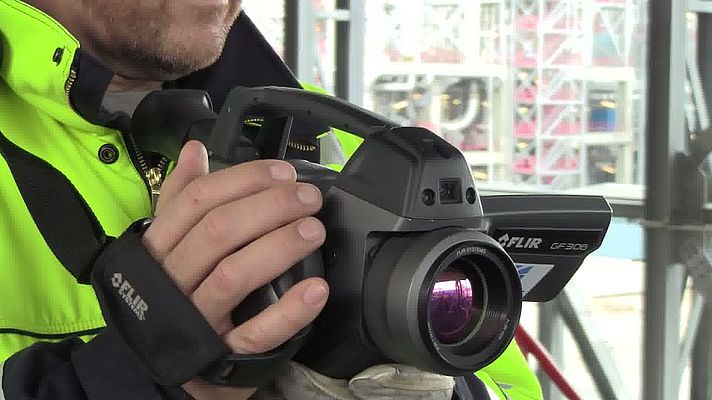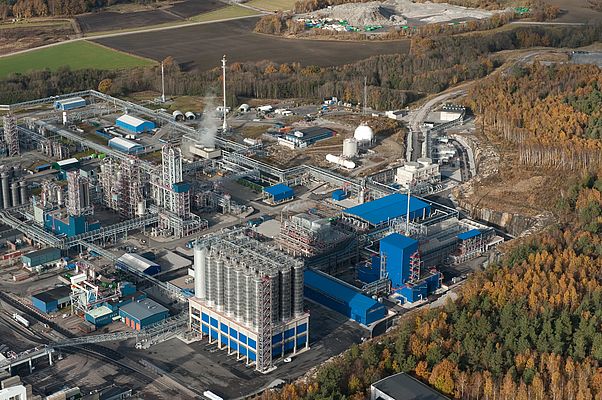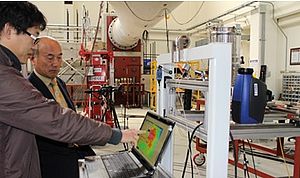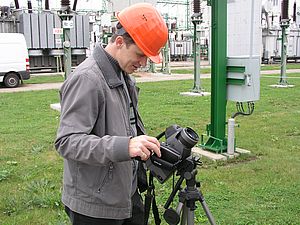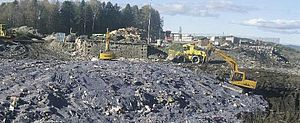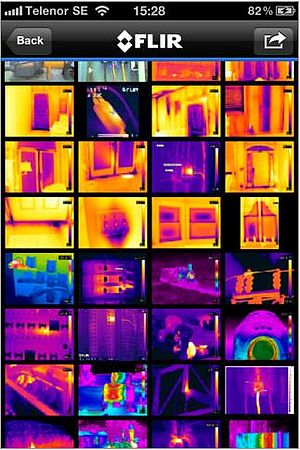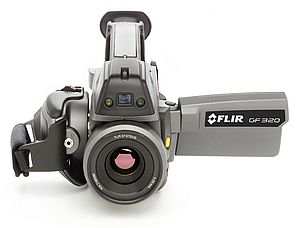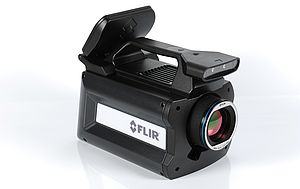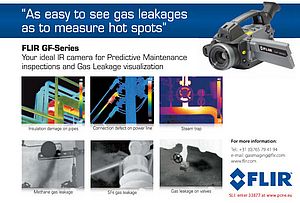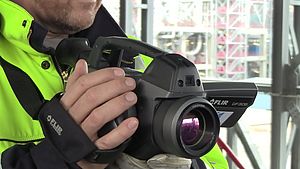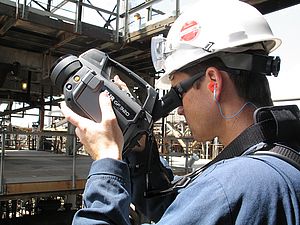Petrochemical plants often handle invisible gaseous hydrocarbons. They may be toxic, or cause health issues, others are highly flammable, and most of them are dangerous for the environment. That is why leak detection is of vital importance.
The Borealis high-pressure, low-density polyethylene (LDPE) plant in Stenungsund, Sweden, produces LDPE products for the cable and wire sector and has an annual production capacity of 350,000 tonnes. The Borealis cracker facility delivers the main ingredient: ethylene, which is converted into polyethylene in a high-pressure polymerization process.
Ethylene is a highly flammable hydrocarbon. To further increase the safety within the plant and reduce the environmental impact, Borealis has purchased an optical gas imaging camera from FLIR Systems. With this gas leak detection tool Borealis ensures that no gas leak escapes the attention of the process operators.
An optical gas imaging camera is a quick, non-contact measuring instrument that can visualize gas leaks in real time. Where many other measuring instruments only present the inspector with a number, optical gas imaging cameras present visual information, making the leak detection process more intuitive. Optical gas imaging cameras can also be used in hard-to-access locations, since they can detect small leaks from a distance. "When we started testing this relatively new technology I was at first very sceptical", says shift supervisor LDPE Jan Åke Schiller. "But seeing these optical gas imaging cameras in action I quickly realized that they had an immense potential for leak detection here at the polyethylene plant and in petrochemical plants in general."
Before the purchase of a FLIR GF306 optical gas imaging camera Schiller and his colleagues used so-called 'sniffers', devices which measure the concentration of a certain gas in one single location and generate a concentration reading in parts per million (ppm). "The main advantage of the optical gas imaging camera is that it provides you with the possibility to detect gases visually", says Schiller. "Where sniffers just give you a number, an optical gas imaging camera allows you to detect gas leakage anywhere within the field of view of the camera. This speeds up the inspections considerably. Now that we have the optical gas imaging camera we do a quick scan at every startup. With a quick scan we cover approximately 80% of the entire plant in about thirty minutes. You would need a team of ten people with sniffers to work for two full days to reach the same result."
This doesn't mean that they stopped using sniffers altogether, stresses Schiller. "We use the sniffers alongside the optical gas imaging camera. We use the optical gas imaging camera to detect the leak and then use the sniffer to quantify the leak." Schiller was surprised to see how sensitive the FLIR GF306 optical gas imaging camera turned out to be. "I detected leaks where the sniffer gave a reading of below 100ppm, especially when operating in the High Sensitivity Mode this camera is surprisingly sensitive, it can be used to detect even smaller gas leaks from about seventy meters. This enables the operator to perform these inspections from a safe distance."
All leaks to be repaired are reported to the maintenance crews. In this part of the process the use of optical gas imaging cameras also has an advantage over sniffers, according to Schiller. "When you are using sniffers you have to describe the exact location of the leak using words which can be difficult sometimes. With the optical gas imaging camera we can simply attach a video file to the work order and the maintenance crew will see for themselves where the leak is located. This allows me to spend less time on generating leak reports and more time out in the plant, detecting leaks, or performing other duties."
Due to the fact that these inspections are much less time consuming now that he uses the FLIR GF306 optical gas imaging camera the leak detection frequency has increased significantly, according to Schiller. "When we only had sniffers we did other yearly inspections. To cover all of the pipework that this plant contains, which is all in all over 100km in length it takes a team of people with sniffers a whole week to inspect the whole plant. With the optical gas imaging camera this takes one person one day. Now that we have the optical gas imaging camera we inspect the entire plant twice a year and we also perform a quick inspection at every startup. So the inspection frequency has gone up considerably."
Apart from real time visualization the FLIR GF306 optical gas imaging camera is also capable of recording both visual light video and thermal video footage. "This is very important, because the moving smoke like plume shows up much more clearly in a video than in a still picture", explains Schiller. "For leak reports we usually start our video recording in the visual video mode, to show the location to the maintenance crew, then we switch to the gas detection mode to show the leak and then we switch back to visual video mode to verify the leak location. This method has worked really well for us."
"This plant is relatively new, it was opened a few years ago to replace the old polyethylene plant" adds Schiller. "The new polyethylene plant had a few teething problems, but with the help of the optical gas imaging camera we have been able to make it into one of the leak-tightest polyethylene plants in the world. To give an idea this new plant produces twice as much polyethylene as the old plant did, but the amount of VOC's escaping due to leakage is ten times less. In my opinion the FLIR GF306 optical gas imaging camera has helped to make this very low leakage rate possible."
"Some companies might be reluctant to buy an optical gas imaging camera due to the price tag, which is understandable as a sniffer is much cheaper", continues Schiller. "But the difference in purchase cost is deceptive. For one thing, inspecting with sniffers is much more labor-intensive and man hours do not come cheap, well not here in Europe at least. Secondly leaks in unexpected locations are difficult to find and easy to miss with sniffers, so using optical gas imaging cameras will help ensure the safety of personnel and of the inhabitants of the surrounding area and in my opinion safety is definitely worth investing in.”
"Last but not least the use of optical gas imaging will help reduce amount of gas lost to the atmosphere", continues Schiller. "Given the fact that these gases are our base material it is a waste to lose it due to leakage. By reducing the leakage the optical gas imaging camera will earn back its purchase cost. So all in all I would definitely say that an optical gas imaging camera is worth the investment."


